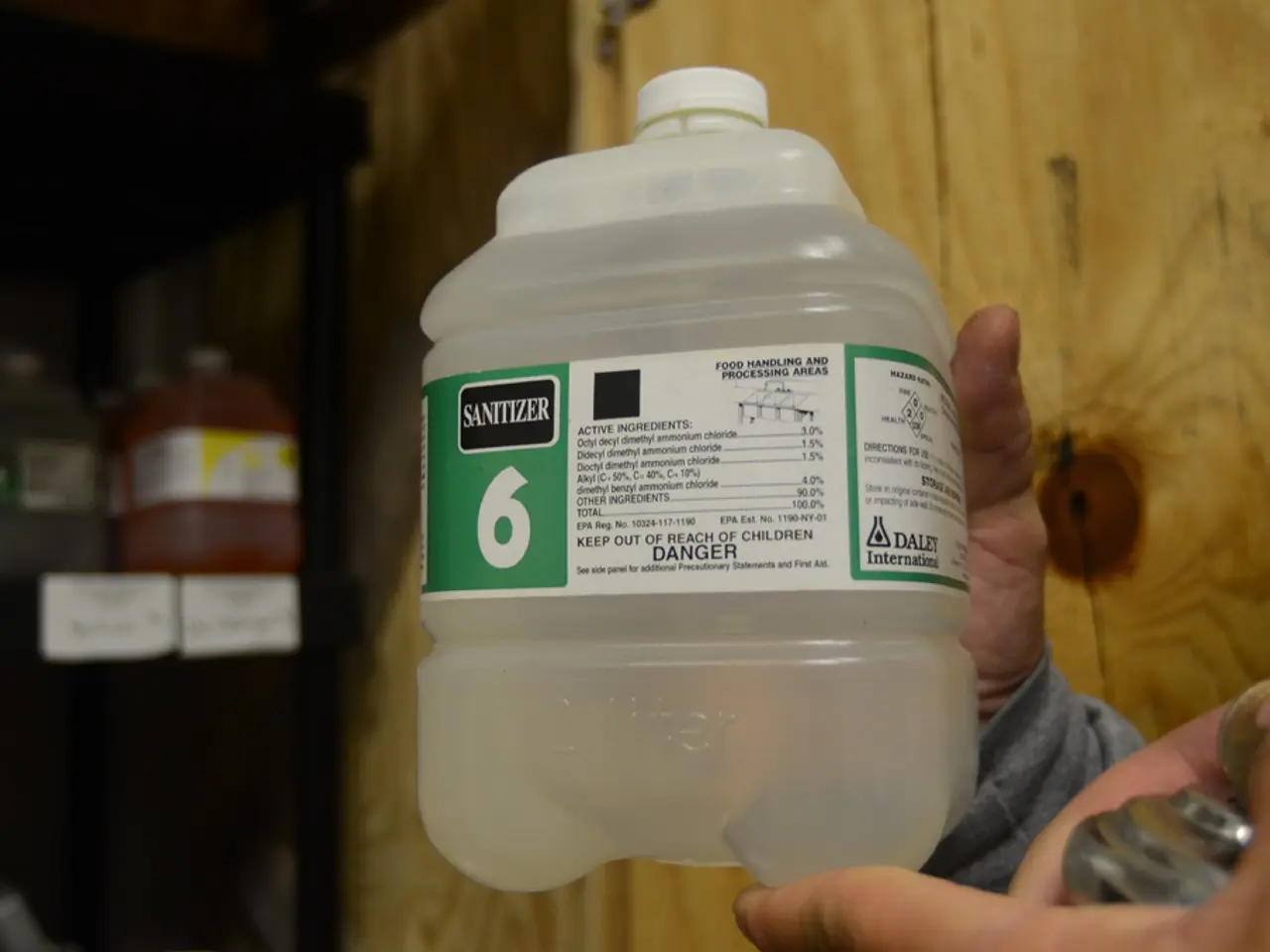Difference Between Ingrown Hairs and Herpes: An Explanation
In the realm of skin conditions, two common ailments often cause concern: herpes and ingrown hairs. While both may present as bumps or sores, understanding their distinct characteristics is crucial for prompt treatment and prevention.
Herpes, a viral infection caused by the herpes simplex virus (HSV), is more than just a nuisance. A first outbreak of genital herpes requires immediate medical attention due to its potential severity. One in eight people between the ages of 14 and 49 years have genital herpes, making it a prevalent issue worldwide[1].
Herpes sores are characterised by clusters of tiny, painful blisters filled with clear fluid. These blisters are often grouped closely together and look like small sores. Before they appear, a burning or tingling sensation may be felt. When they break, they release fluid that can cause further pain. Herpes sores can take up to 4 weeks or longer to heal, and often accompany outbreaks, including headaches, fever (high, around 101°F or 38°C), swollen lymph nodes, body aches, and fatigue[2].
On the other hand, ingrown hairs are caused when a shaved or tweezed hair grows back into the skin, causing irritation. These typically cause single, isolated bumps or sores that are red, irritated, and may develop into pus-filled lesions called pustules or red bumps called papules[3]. Ingrown hairs usually improve on their own and tend to heal faster than herpes blisters when hair removal methods like shaving, waxing, or tweezing are stopped[4].
To help differentiate between the two, it's important to focus on their distinct characteristics. Herpes causes clusters of tiny, painful blisters, while ingrown hairs typically cause single, isolated bumps. Herpes blisters are fluid-filled and painful, while ingrown hairs cause localised inflammation and irritation, but not usually as painful as herpes blisters. Herpes sores can take up to 4 weeks or more to heal, while ingrown hairs usually heal quickly when hair removal methods are stopped[5].
If symptoms persist or worsen, or if you are uncertain about the diagnosis, it is recommended to consult a healthcare provider who can perform appropriate tests to confirm herpes or diagnose an ingrown hair[1][3][4][5].
Moreover, certain factors can complicate herpes outbreaks, such as having HIV, uncontrolled diabetes, or taking drugs that weaken the immune system. In such cases, immediate medical attention is required[6].
Ingrown hairs, while generally less severe, can become infected and cause intense pain and even scarring in some people[7]. To reduce the risk of ingrown hairs, pulling the skin taut and shaving only in one direction can help. Exfoliating before hair removal and using a clean, sharp razor can also aid in prevention[8].
In the case of genital herpes, there is no cure, but antiviral treatment can decrease the severity and frequency of outbreaks, and reduce the likelihood of a person spreading the virus to others[9].
For pregnant women, a herpes outbreak close to their due date should be addressed immediately, as it can pose risks to the baby[10].
In conclusion, while herpes and ingrown hairs may share some similarities, their distinct characteristics and potential complications necessitate careful attention. By understanding the differences and taking preventative measures, individuals can protect their health and manage these conditions effectively.
- Diabetes, if uncontrolled, can complicate herpes outbreaks, requiring immediate medical attention.
- Herpes, caused by the herpes simplex virus (HSV), is a viral infection more than just a nuisance.
- One in eight people between the ages of 14 and 49 years have genital herpes, making it a prevalent issue worldwide.
- Herpes sores, characterized by clusters of tiny, painful blisters filled with clear fluid, may accompany outbreaks that include headaches, fever, swollen lymph nodes, body aches, and fatigue.
- On the other hand, ingrown hairs, caused by a shaved or tweezed hair growing back into the skin, typically cause single, isolated bumps or sores that are red, irritated, and may develop into pus-filled lesions called pustules or red bumps called papules.
- To reduce the risk of ingrown hairs, pulling the skin taut and shaving only in one direction can help, as well as exfoliating before hair removal and using a clean, sharp razor.
- Ingrown hairs, while generally less severe, can become infected and cause intense pain and even scarring in some people.
- In the realm of skin conditions, psoriasis, atopic dermatitis, and rash are other medical-conditions that require attention for health and wellness.
- When it comes to skin-care, knowing the potential complications of conditions like herpes and avoidance of over-the-counter treatments is crucial for optimal care.
- Science has made great strides in the medical-field, allowing for the prediction and management of conditions like herpes and asthma (COPD).
- In addition to herpes, oral herpes, colitis, and ulcerative colitis are other medical-conditions that affect oral and digestive health.
- For pregnant women, a herpes outbreak close to their due date should be addressed immediately, as it can pose risks to the baby.
- Sexual health is an essential aspect of overall health and wellness, and understanding the distinct characteristics of conditions like herpes is vital for prompt treatment and prevention.




